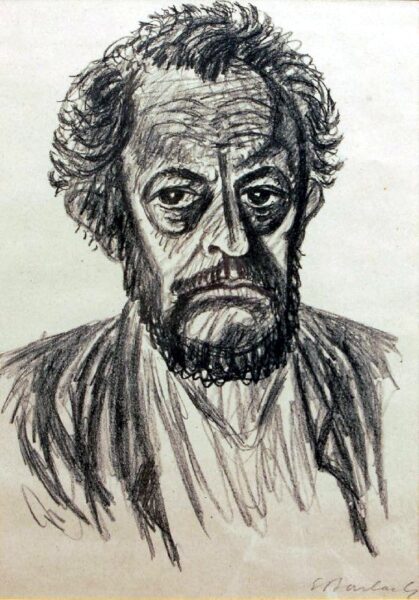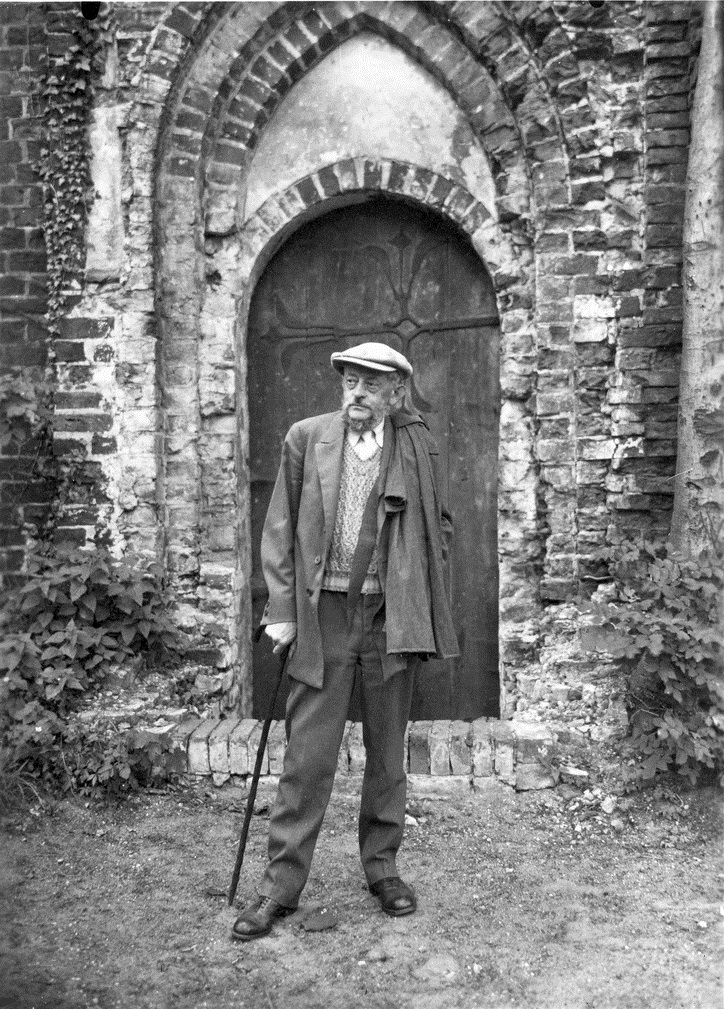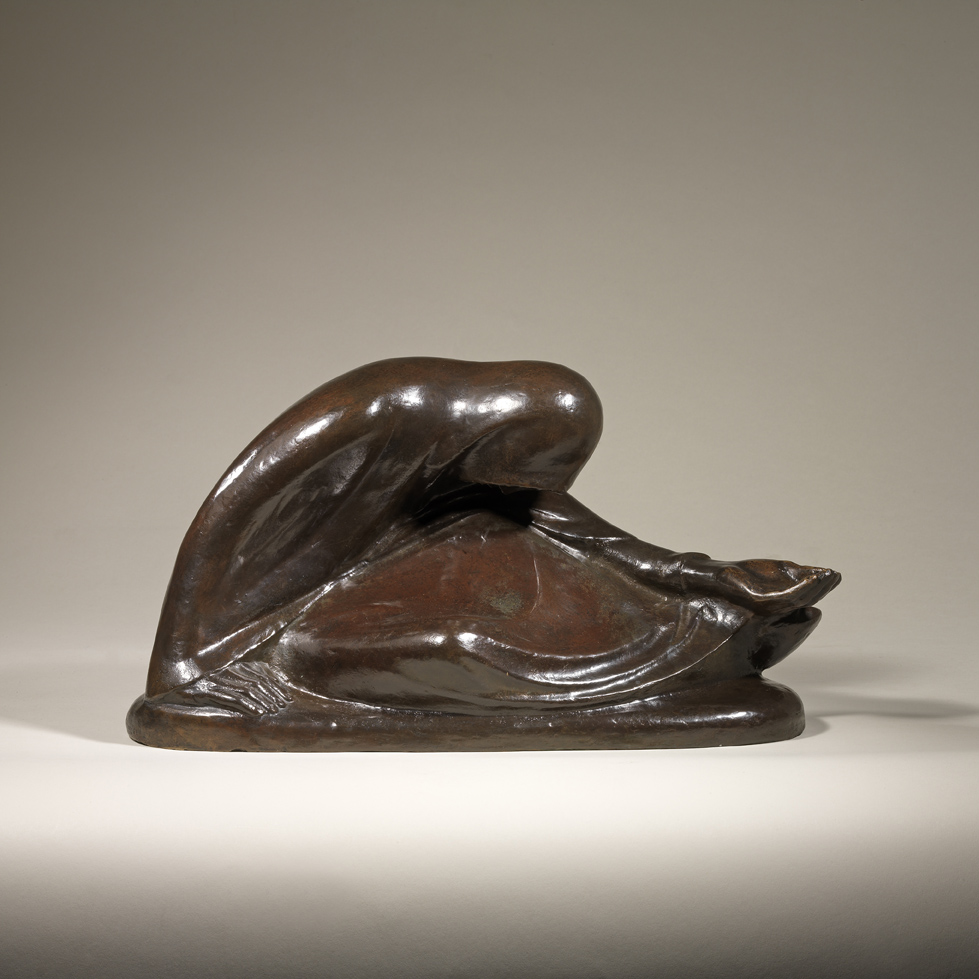The sculptor with his gift for sharp observation and his feelings for palpable reality veers toward the writing of drama. Ernst Barlach
Until the early 1900’s Barlach created works which were romantic in subject, reflecting the elegant and sinuous lines of Art Nouveau. A journey across the Russian Steppe in 1906 had a dramatic effect on his consciousness, and on his sculptural style. He perceived figures there as objects strewn on the spatial plane, connected with earth and air, and their existential presence moved him deeply. Returning to northern Germany, he created a series of figures, many of them peasants or paupers. In these works, the swooping lines of late Symbolist art were invested in his work with vigour and tension, and the poses of his figures were vital and specific.
Barlach’s figures seem almost to ‘overact’ – to mime their meanings in exaggerated body language. It is no surprise to learn that he was highly involved with expressionist drama, designing for the theatre, and writing plays.
In 1888 Barlach enrolled at the Hamburg School of Arts and Crafts and from 1891 to 1895 he studied sculpture and design at the Dresden Academy of Arts. He then moved to Paris, where he studied at the Academie Julian from 1895 to 1896 and worked as a sculptor. Between 1901 and 1905 he designed ceramics for the Muntz factory in Wedel and it was during this period that he became friends with the publisher Reinhard Piper. Another important supporter was the art dealer Paul Cassirer, who also helped the painter Oskar Kokoschka.
In 1906 Barlach undertook a journey across the Russian steppes with his brother, a point in his life which coincided with the birth of his illegitimate son. He saw this as a turning point in his career. Amongst the peasants of Russia, he saw “Christian humility towards all things” and started to read the works of Dostoevsky and Tolstoy. Barlach’s drawings and sculptures of Russian beggar women are some of his most famous works, exploring the material and spiritual needs of human beings. His characters are solid, reduced into their essential geometric forms, their eyes are often closed or half-closed. Sometimes the facial expressions are primitive, sometimes grotesque or touchingly comic.
Art became for Barlach an expression of a spiritual search for God, inner self, and other human beings. By the 1920s, he was considered one of the leading expressionist sculptors of the country.
Barlach died on October 24, 1938 and was buried near his father in Ratzeburg.




